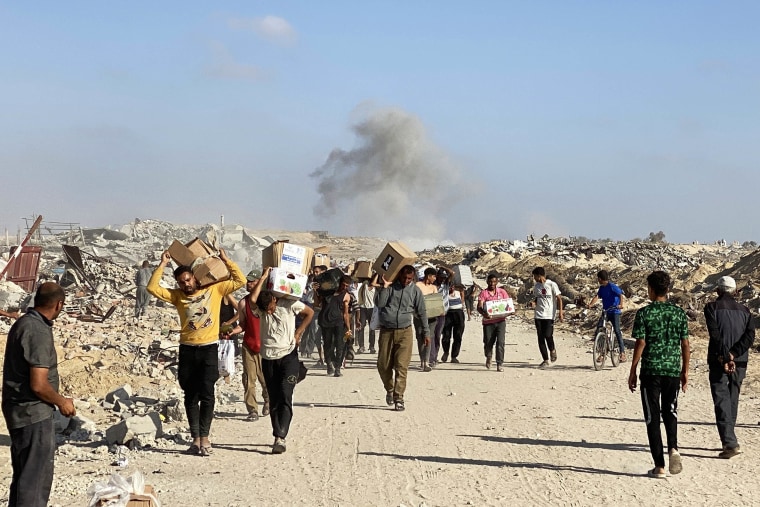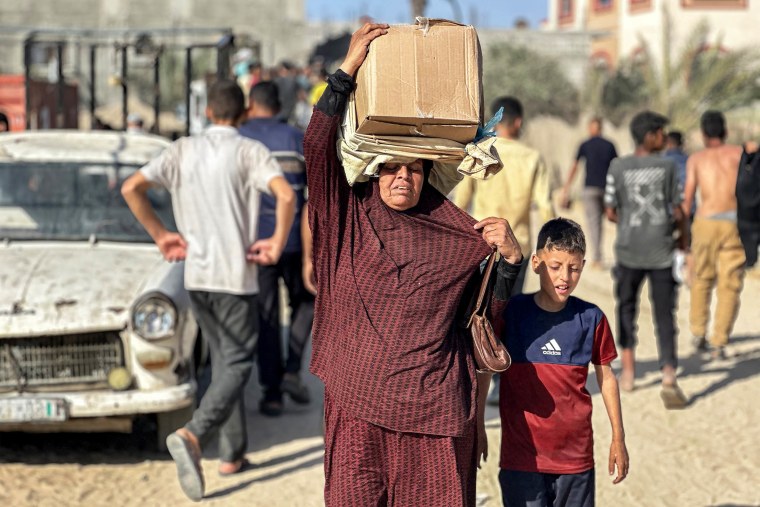In the midst of an ongoing humanitarian crisis in Gaza, the Gaza Humanitarian Foundation (GHF), a U.S.-backed entity sanctioned by Israel, has commenced operations aimed at distributing aid in the region. This initiative has ignited considerable controversy, facing staunch opposition from the United Nations and numerous humanitarian groups. The recent resignation of GHF’s executive director, Jake Wood, adds to the complexities surrounding this new aid mechanism.
The GHF represents a paradigm shift in the distribution of aid, taking control away from long-established UN-led operations. Since the war broke out in October 2023, the UN and partner organizations have been the backbone of aid efforts in Gaza, delivering essential supplies such as food, medicine, and fuel. The GHF’s approach, however, is marked by a restriction on food distribution to a limited number of hubs, which are heavily guarded and located near Israeli military outposts. Currently, only four such hubs are operational, raising concerns about accessibility and security for the population in need.
Israel’s call for GHF to take over aid distribution stems from allegations that Hamas has been appropriating aid intended for civilians. In contrast, both the UN and various humanitarian agencies deny the existence of significant aid diversion, arguing that the newly implemented GHF mechanism not only undermines humanitarian principles but also sets a precedent for using food as a weapon in conflict.

Israel had previously barred the entry of food, fuel, and medical supplies into Gaza for nearly three months, exacerbating the situation to the brink of famine. Recently, a modest influx of supplies has resumed, allowing the UN to distribute essential items until the GHF became operational. This has offered some relief but raises serious concerns about the sustainability and efficacy of the new distribution system.
The Hamas-controlled Ministry of Interior has publicly cautioned residents against engaging with GHF, further complicating the foundation’s efforts to gain cooperation and trust from the local populace. This backdrop of tension raises questions about how effective the GHF’s operations will be amid opposition.
On its opening day, GHF reported that it moved trucks of food to its designated hubs and commenced distribution, albeit without disclosing specific figures. The organization has ambitious plans, aiming to reach over 1 million Palestinians by the end of the week, in a territory of approximately 2.3 million inhabitants.
Reports indicate that thousands of individuals made their way from makeshift camps near Khan Younis to the GHF hubs, crossing military lines to access the provisions. However, such long treks carry inherent risks, especially given the heightened military presence in these areas. Recently, tensions escalated at one of the hubs in Rafah, where overwhelming numbers led to a chaotic scene, prompting warning shots from Israeli troops and resulting in injuries.
Jake Wood, the former executive director of GHF, had positioned himself as its leading figure but ultimately resigned, citing his inability to operate independently from external influences. Wood’s departure raises significant doubts about the foundation’s future direction and operational integrity, leaving unanswered questions regarding leadership and funding.
The GHF claims to have secured over $100 million in commitments from a European government, although it has not publicly disclosed the donor. Intriguingly, both the U.S. and Israel have distanced themselves from any direct financial involvement, further clouding the foundation’s funding origins.

The GHF’s framework proposes that each of its current hubs could serve about 300,000 individuals. While this ambitious claim aims to cater to upwards of 2 million people over time, specific logistics and locations for additional hubs remain unspecified. Aid delivery relies on private contractors using armored vehicles, aiming to protect supplies from theft or redirection by criminal elements or militant groups. However, the existing hubs are positioned in areas where the majority of the population does not reside, limiting access for those desperately needing assistance.
Before his resignation, Wood highlighted the necessity of adjustments within the distribution strategy, yet it remains unclear whether Israeli authorities endorsed these changes. Reports mention a letter he sent to Israeli military officials proposing that until eight hubs were fully operational, GHF would continue to collaborate with the UN in distributing food and essential non-food items. However, the lack of confirmation from Israeli authorities regarding these arrangements leaves the operational future of GHF uncertain.
The contention surrounding GHF’s approach is palpable, with the UN and various humanitarian organizations characterizing the new distribution plan as a means to “weaponize aid.” Critics argue that it could allow Israel to influence who receives aid and potentially displace people against their will by forcing them to relocate to claim provisions. Such actions may breach international laws concerning forced displacement.
Shaina Low from the Norwegian Refugee Council underscored the ethical implications, asserting that their organization cannot participate in a system that contravenes humanitarian tenets and risks complicity in serious legal breaches. Furthermore, the GHF’s assertion of impartiality is questioned due to the logistical dependency on Israeli military infrastructure.

In a statement following the recent tension, Israeli Prime Minister Benjamin Netanyahu indicated that the aid mechanism would eventually funnel Gaza’s population into a “sterile zone” in the southern region of the territory for their safety while military operations against Hamas continue. Speculation persists over whether this measure would ultimately seek to permanently relocate residents, an idea that has faced widespread opposition both locally and internationally.
Despite GHF’s claims of offering impartial, apolitical aid, the reality of its operations, reliance on military oversight, and funding uncertainties leave many skeptical of its objectives. There’s an urgent need for clarity on how aid will be dispensed and whether it will indeed reach those who are most in need—those in desperate circumstances across Gaza seeking survival against overwhelming odds.
As the humanitarian landscape remains in flux, the response from the broader relief community is crucial to ensuring that those in dire need are adequately supported. The ongoing debate reflects broader concerns over agricultural practices in humanitarian crises, with UNICEF’s James Elder emphasizing the capacity of existing systems to meet Gaza’s needs effectively if allowed to operate freely.

